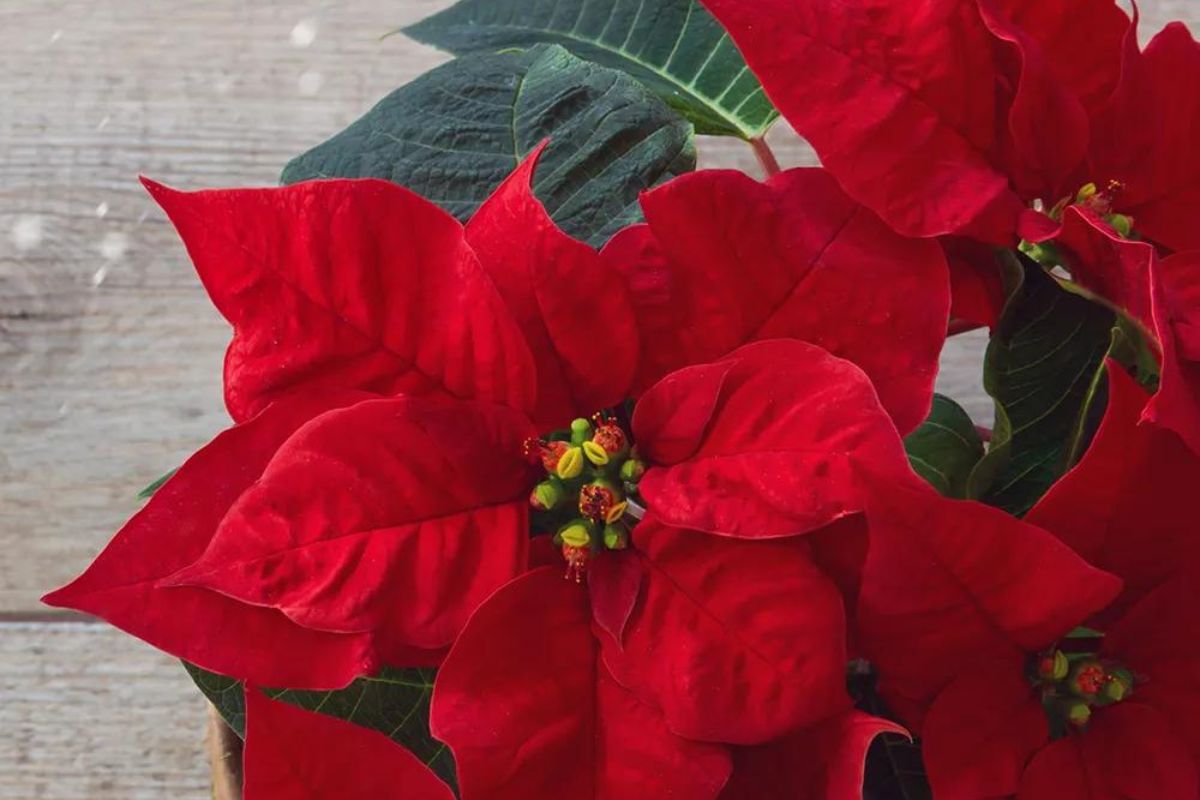Christmas Plants for Your Garden and Your Home
Hello - and how have we reached the last month of the year already? Are you like me, one of those gardeners who still has a long list of tasks to accomplish before winter really sets in with a vengeance? Or are you like my sister and only have a few pots left to wrap up warm before starting on the Christmas presents?
There’s plenty going on in the garden, even at Christmas time. And I’d like to suggest a few festively named garden plants to whet your appetite to get you out there in a warm jumper and wellies.
Oh, and because Christmas always includes festive quizzes, I’ve given you some fun facts to impress visitors with when they admire your Christmas houseplants.
Christmas Plants Outdoors
There are bees and pollinating insects that are active throughout the winter, so we need to provide food for them in our gardens. Luckily there are a surprising number of plants that could be flowering, even at Christmas time. Some of these are scented too. The plant’s aim is to entice in the pollinators, but we humans can just enjoy the fragrance.
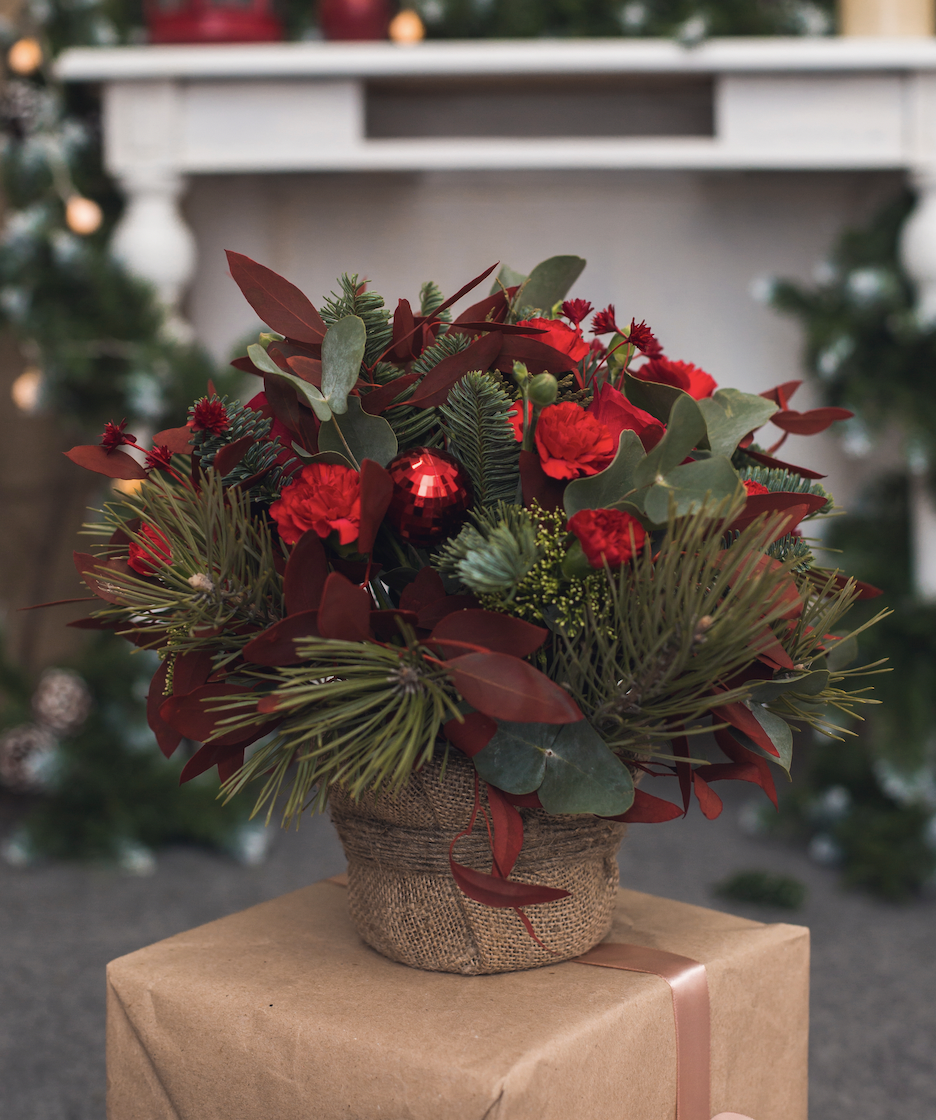
Climbers
Let’s start with those bare-looking fences - why not grow some winter flowering Clematis?
Clematis cirrhosa ‘Jingle Bells’ will already be flowering (it starts in autumn) and is hardy even in northern areas of the UK. Scented blooms lasting through until March and are followed by attractive seedheads.
Clematis cirrhosa ‘Christmas Surprise’ however, needs a sheltered spot. Like ‘Jingle Bells’ it has creamy flowers.
Whilst both these Clematis have evergreen foliage from autumn through to spring, they will have a dormant phase in summer and may lose their leaves then.
Pruning note: These are both Group 1 Clematis and so do not need regular pruning. If they outgrow their space, just cut back stems after flowering.
Shrubs
Camellia ‘Yuletide’
Camellia x vernalis ‘Yuletide’ – and it has red flowers too – how Christmassy is that! This is a relatively compact hybrid Camellia, so it will grow in a pot if you don’t have acid soil in the garden. A pair of them on either side of the front door make a great seasonal display. Interesting fact - most Camellia flowers don’t have a scent, but this one does. It’s actually the Camellia leaves which are used in perfume making.
Rhododendron ‘Christmas Cheer’
Rhododendron ‘Christmas Cheer’ is a small-medium sized, acid soil loving, evergreen Rhododendron. Despite its name, it doesn’t always open those buds by December 25th. I have known it hang on until the Twelfth Day of Christmas before flowering. However, it is worth the wait as, because it’s a hardy plant, the dark pink buds open to pale pink flowers even if there’s heavy snow in January. Positively magical.
Sarcococca, Christmas Box
Sarcococca, also known as Christmas Box and Sweet Box, is a member of the Buxus family but a different genus. It is less susceptible to Box Blight and seems not to be affected by Box Moth Caterpillar. This a delightful evergreen shrub to have alongside a gateway or door, as the tiny white flowers pack a delicious scent that you can smell from yards away as you approach. There are different sized species available, variously producing red or black berries following the flowers. The smaller species will grow happily in a pot and they all like a shadier spot.
Herbaceous perennial
Helleborus niger ‘Christmas Carol’
I do like a Hellebore, and I hope sure you’ll agree that with a name like this, I just had to include this decorative and useful winter flowering herbaceous perennial! The early winter flowering Hellebore are often referred to as “the Christmas Rose” although they are no relation to roses, actually being a ‘cousin’ of the buttercup. Their low-growing, deeply cut leathery foliage will provide year-round interest at the front of a partially shaded bed or woodland floor.
On a helpful, gardening note – if you’re bothered by deer and rabbits eating your precious flowers and border plants, then consider Hellebores, as the aforesaid beasts do not like eating them!
And one last little treat for outside
Viola oderata ‘Christmas’
Viola oderata are the sweet violets with a delicate scent that travels quite a distance. The flowers are white with a blue tinge and these hardy perennials form neat clumps in the front of a border. They will need shade from the summer sun, making them a delightful addition to a woodland edge garden.
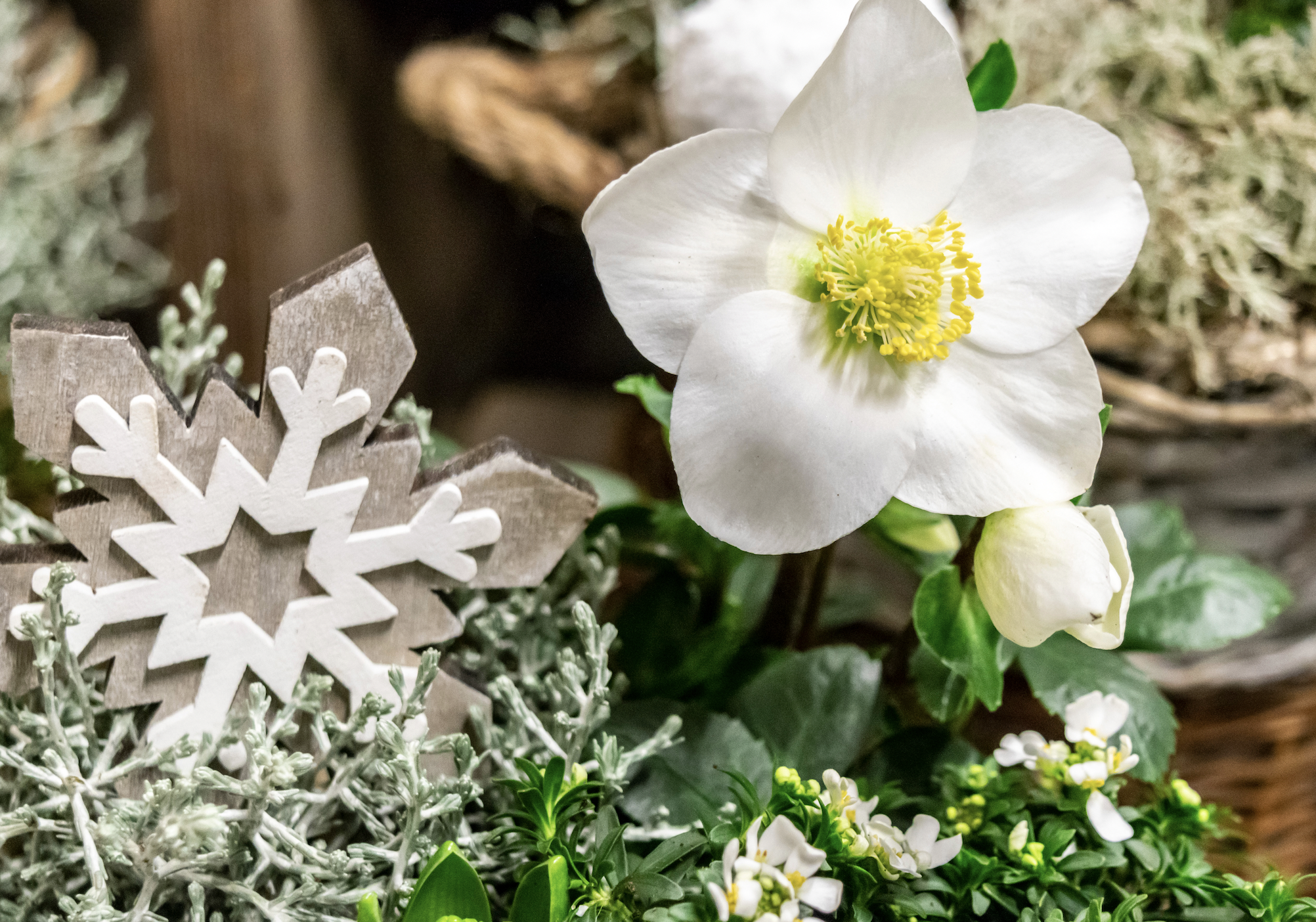
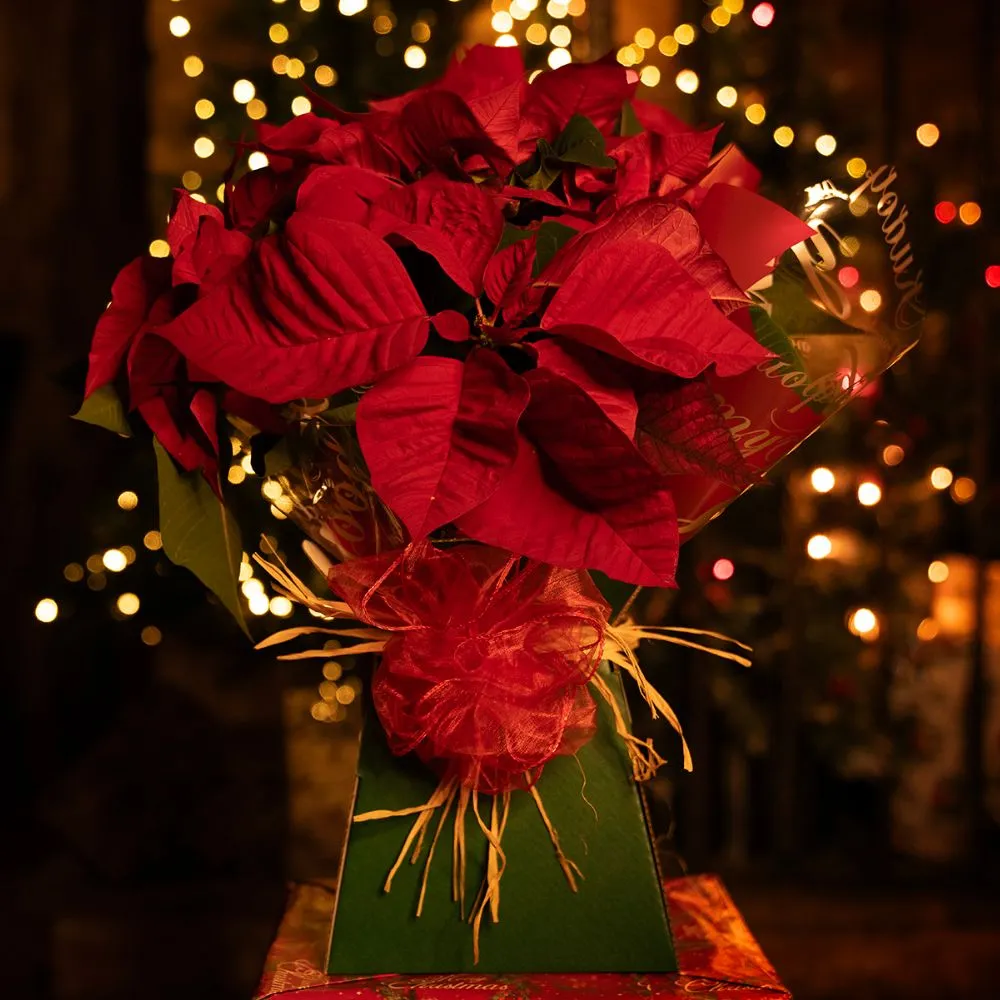
Poinsettia
Poinsettia, also known as Christmas Flower and Christmas Stars, is one of the UK’s most popular of the season plants. In the USA they even have Poinsettia Day on December 12th! However, those bright red, cream-speckled flowers that we love actually aren’t flowers; they’re bracts or modified leaves. Look closely and you’ll see that there are small flowers in the centre.
Interesting fact – Poinsettia, Euphorbia pulcherrima, is a member of the spurge family, so it’s related to the Euphorbia plants in your garden borders!
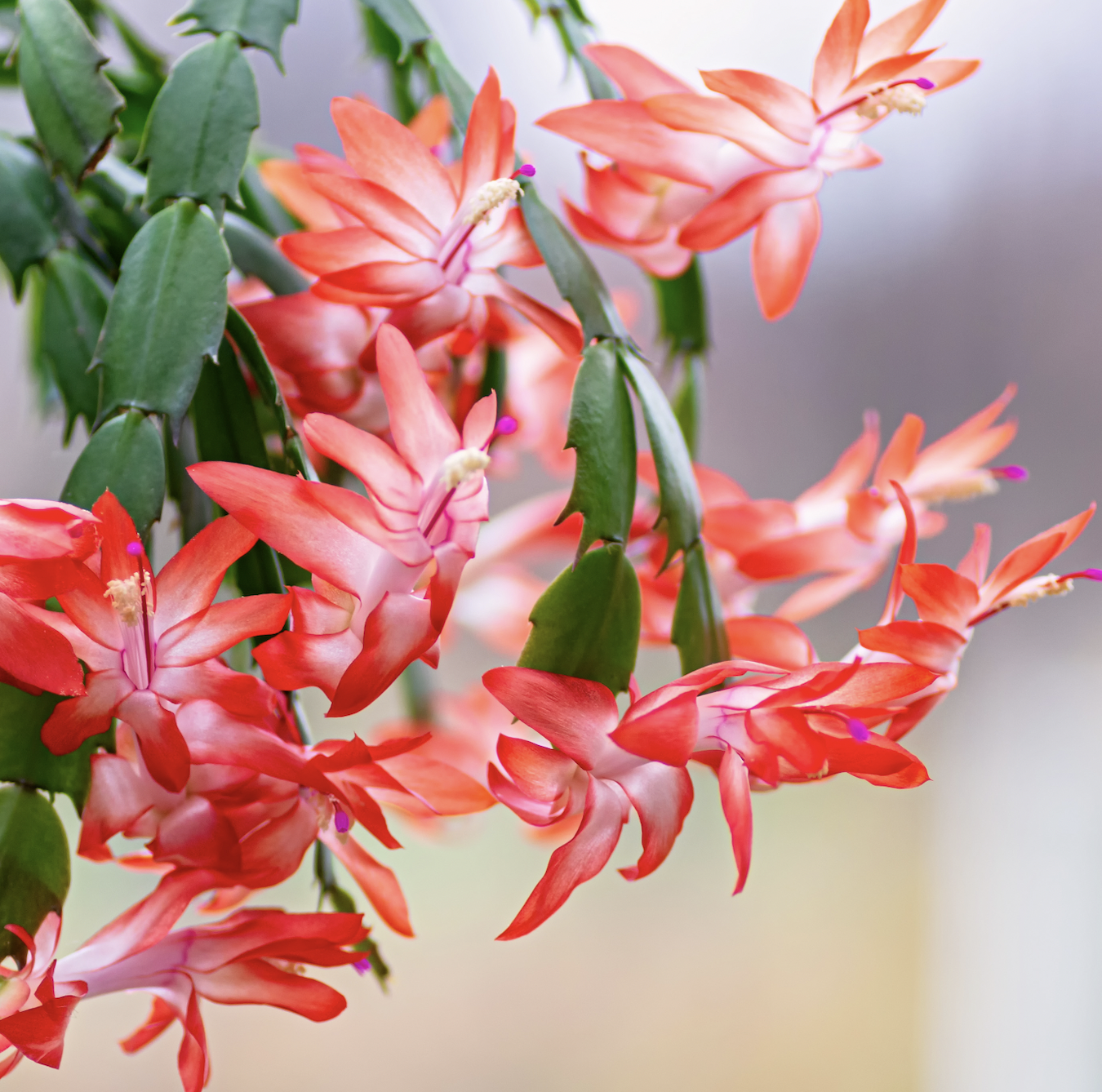
Christmas Cactus
A native of Brazil, the Christmas cactus is a tropical succulent rather than a desert cactus. That is to say, it grows in on trees and rocks in a humid rather than an arid climate. Known botanically as Schlumbergera they have show-stopping blooms in glowing red or pink, but look out for the white-flowered ones too. I find the foliage, which is evergreen, even more, fascinating with its chunky segmented stems. In the UK, both Thanksgiving and Christmas cacti are generally sold as a generic ‘Christmas’ plant as they both flower from November to February.
Interesting fact – telling the difference: Schlumbergera truncata, the Thanksgiving cactus, has clawed edges on the leaf and is sometimes called crab cactus. Schlumbergera buckleyi syn Schlumbergera bridgesii, Christmas cactus, has notched but rounded edges.
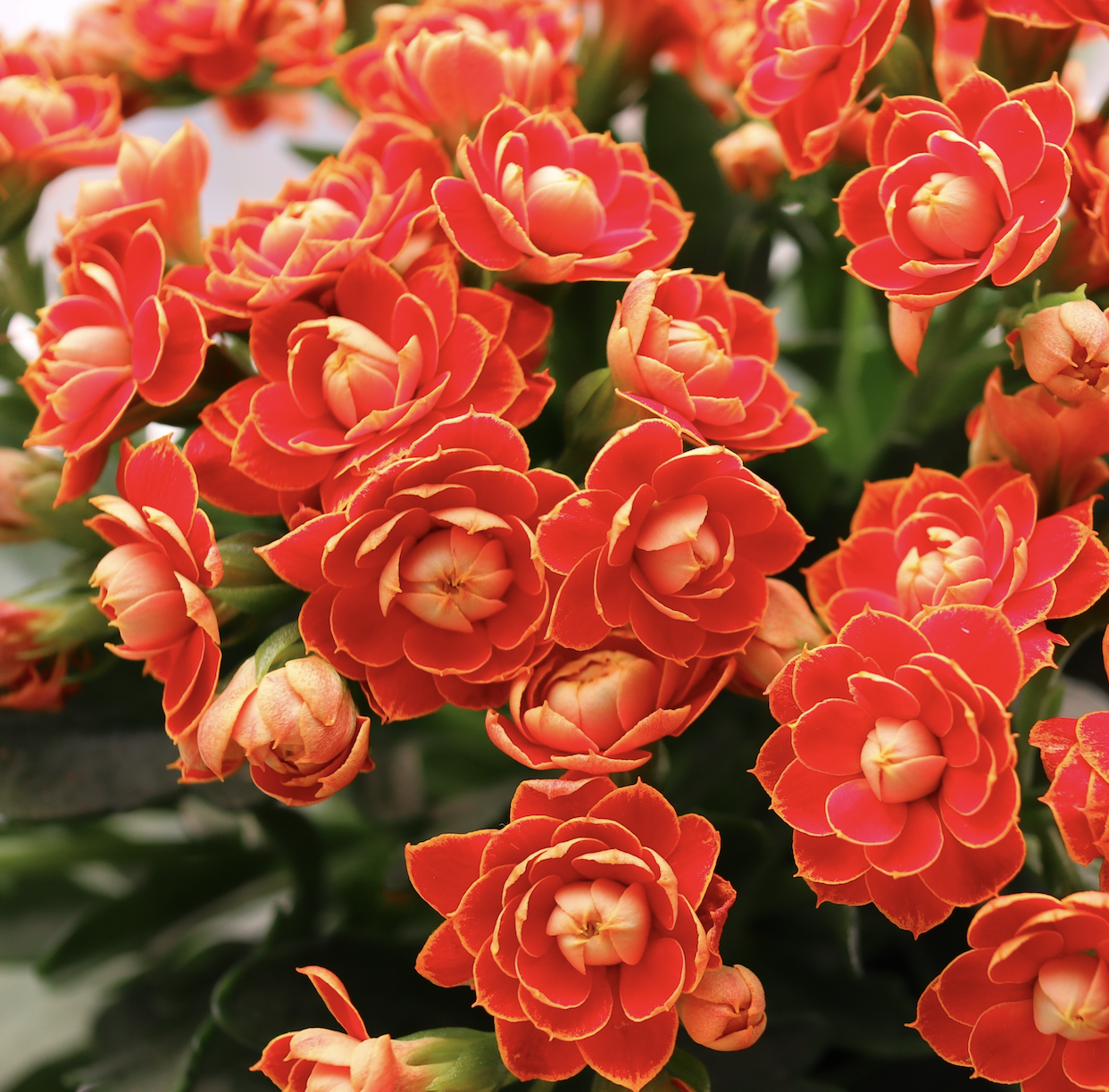
Kalanchoe blossfeldiana, Flaming Katy
A succulent perennial with dark green, rounded leaves that have scalloped edges. This Kalanchoe got its ‘flaming Katy’ epithet from its clusters of bright red, pink or orange flowers held above the foliage.
After enjoying the flowers at Christmas, and almost to Easter, many people throw the plants onto the compost once the flowers are finished. However, if the stems are cut back, they will grow new stems and bloom again. Given them a feed though, as they’ve been working hard.
Interesting fact – hailing from Madagascar, Kalanchoe blossfeldiana will happily tolerate salty sea air. Why not fill your coastal garden with these as showy bedding plants next summer?
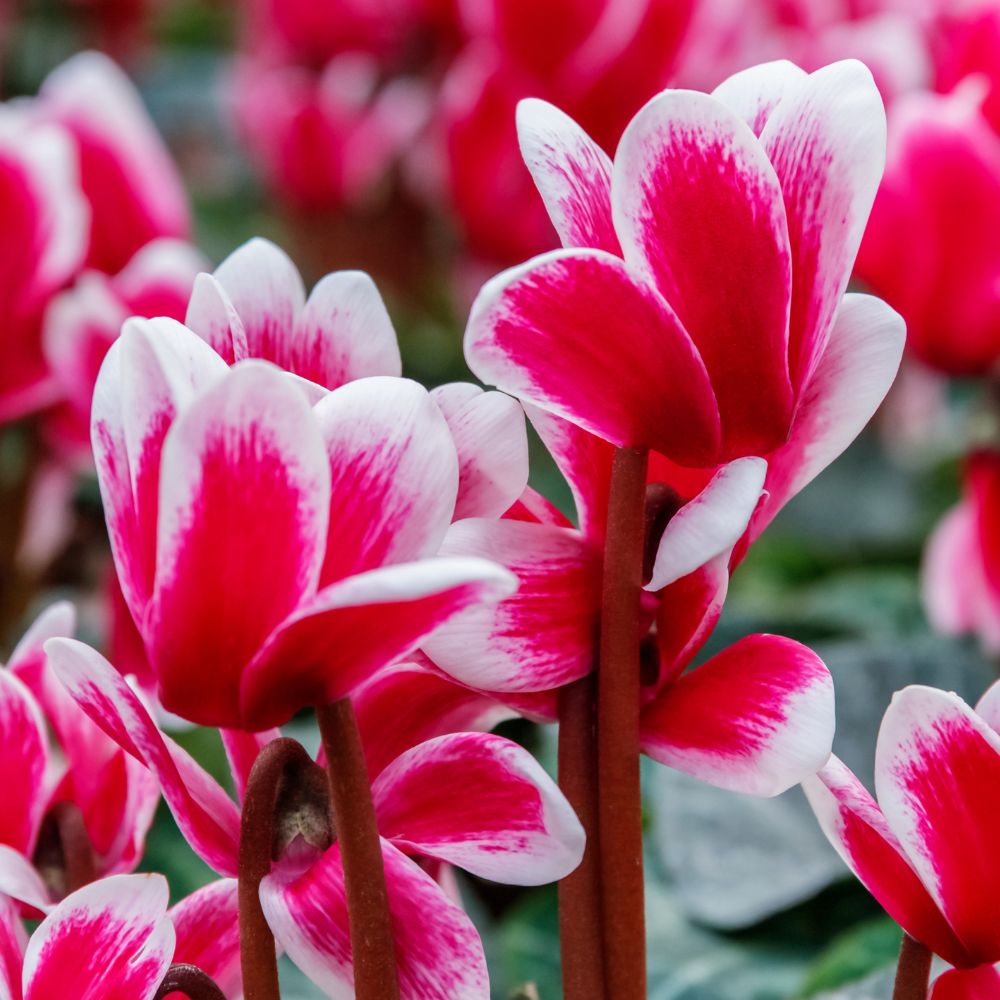
Cyclamen
There are different species of Cyclamen, but the one we find ourselves enjoying at Christmas is Cyclamen persicum. These have brightly coloured flowers of red, pink or white, which may have frilly edges and even be scented. (Yes, really, have a sniff when you’re in the garden centre!) Some modern hybrids may have silver marbling on their attractive, heart-shaped leaves. These indoor Cyclamen have been domesticated from a wild species in the Middle East.
There are outdoor / hardy winter flowering Cyclamen persicum available too, and these make pretty container plants.
Interesting fact –Cyclamen are tuberous perennials and, with the right care, the plants have been known to live up to 100 years.
Last but not least – for those last-minute gift panics, do remember that different baskets and plant arrangements are available from British Garden Centres for a ready-to-go gift.
I hope you have a wonderful festive season filled with horticultural delights and I’ll be back in 2023 with some New Years' Resolutions for your garden.
Marie
PS I’m rather fond of the whole Christmas thing, so there are plenty of festive gardening and plant-related blogs on the Plews website – some fun, some factual.
About the author
Marie Shallcross is an advocate of edible ornamental gardens - beautiful, practical spaces that are both human-friendly and wildlife friendly. She is the owner of Plews Garden Design, offering bespoke Gardening Lessons where your garden is your classroom. As well as Garden Design, Planting Designs, and Garden Consultancy.
A member of the prestigious Garden Media Guild, Marie writes a weekly award-winning gardening blog – Plews Potting Shed - plus articles for various publications and websites.





















